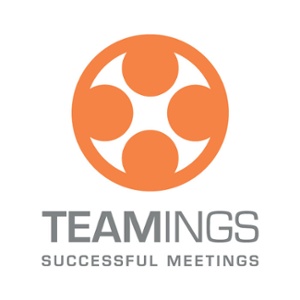Between face-to-face briefings, audio conferences, web conferences and webinars, most people experience unproductive meetings on a weekly basis. This is because so many are ill planned, mishandled, and pointless. People call them when they don’t need to – wasting the time and resources of their co-workers, clients, partners, stakeholders and vendors. They fail to take the time to properly prepare- forgetting to mention the purpose, not planning an agenda, not identifying the roles of each participant and never bothering to craft an environment conducive to producing results. How many lame web conferences have you been on? This issue is so prevalent in business today that most professionals dread meetings. This state of affairs is quite troubling given that if planned and ran correctly, they are powerful profit increasing tools for any business. They accomplish important outcomes for a company. Outcomes that might not be possible without getting certain people with certain knowledge, skills and resources together. Effective meetings gather together necessary resources and then direct them towards a common objective. The achievement of that objective is worth a lot to a company. Added value can be found in what I like to call, meeting side effects. Benefits of productive gatherings include, but are not limited, to: Broader Consensus and Buy-In – Everyone has a say. They can ask questions, debate doubts and participate in the decision making process. When people feel they have been heard – when they feel like they are part of the decision – they are more likely to buy-in to the proposal. They are more likely to support decisions and work to make the project successful. They are more likely to buy your product! That means faster results for your company. Better Decisions – Speaking of decisions, collaboration produces better decisions. Instead of one mind calling all the shots, multiple brains with different perspectives and knowledge work together – providing input, vital information and debate. People working together as a team result in more creative and innovative options as participants build upon one another’s ideas. Temporary suspension of organizational pressures – Participants are removed from the day-to-day pressures of their jobs. E-mails don’t matter, deadlines are temporarily suspended and they are better able to focus on the task at hand. This allows them to reflect upon and propose changes to the status quo with less distraction. Higher accountability, peer pressure and accolades – Peer pressure can help keep a project or organization on track as well as increase momentum. Issues are discussed and action steps are assigned. Through follow-up gatherings, the whole team is updated on the project, action steps are reviewed and there is an opportunity to publicly acknowledge the accomplishments of individual team members. Not only does this add a layer of accountability (everyone knows who completed their part and who didn’t) but gives the team motivation to do well in hopes of public accolades. Assigning tasks publicly has the added effect of increased follow through because when people accept a task publicly, they are more likely to complete it. Increased understanding of complex problems – If a single person works to solve a complex problem, their understanding of the issue is bound to be limited. In order to understand complex organizational challenges, multiple points of view need to be taken into consideration. Through successful collaboration, teams can express opinions, play ‘devil’s advocate’ and submit queries in a timely and productive fashion – no waiting for e-mail responses or decoding vague and toneless e-mail rants. Teambuilding and work bonded relationships – Working together – whether in-person, through the web or over the phone – is a great way to bond. Of course, in-person is best, but any medium where you can see and/or hear the people you’re working with helps build relationships. Nothing drives innovation, dedication and creativity like a feeling of camaraderie. Without meeting as a group, others can become faceless and detached from their humanity. It’s difficult to bond with someone if you never see or hear them. Alignment of Purpose – Sometimes the big picture can get lost in the day to day details. When working on a project, it’s important to meet so that everyone can refocus on the master goal. This helps the entire team prioritize. Everything a company puts into a successful meeting is an investment because the results are worth more than the initial input. To quote Aristotle, “The whole is greater than the sum of parts.” When a meeting works, it creates synergy that can lead to more profit, innovation, greater understanding – the possibilities are endless. When a meeting doesn’t achieve its purpose, it is a failure. This is a waste of time and resources. Most importantly, it perpetuates a culture of meeting failure. Past experience with horrible conferences taint views of future meetings – they are expected to be a waste of time, and so they are. That’s what the scientists call a self-fulfilling prophecy. So make every one count. Sharpen the objective. Prepare an agenda. Invite the right people. Use the right medium. Only meet if it’s really necessary – don’t just meet to meet. Treat every single one as an investment for your company and as an opportunity to bolster your career. To receive more tips and insights from the experts at TEAMINGS, please sign up for our newsletter. For more information on how TEAMINGS can help you have truly successful meetings – on-line, on the phone or in person, click here.


